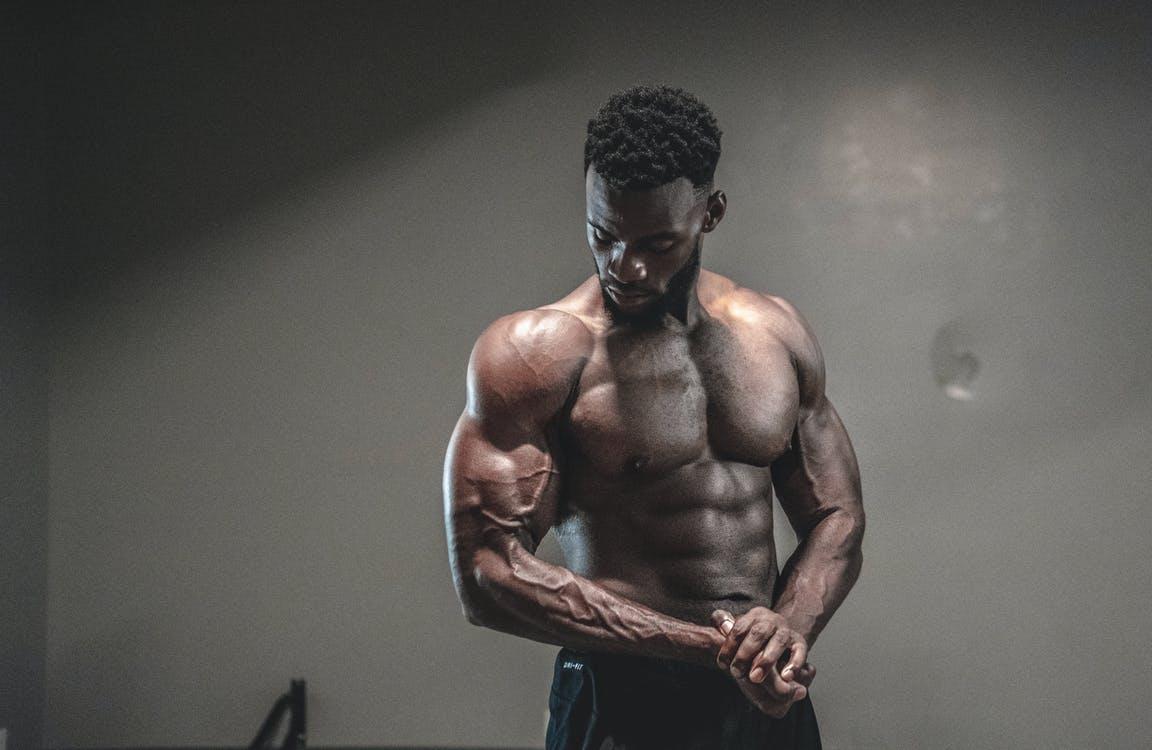It’s the start of a new year, meaning loads of guys are drawing up their resolutions. Who knows how long these good intentions will last? To be honest, it doesn’t matter – this isn’t another boring post on new year’s resolutions! Instead, we’re focusing on a particular goal that lots of guys have at the start of each year: building muscle.
You probably have this goal, and you may have been working towards it for some time. But, what exactly do we mean by ‘building muscle,’ and how does it work? These questions are rarely asked, so it helps to gain a deeper knowledge of the topic. As with all things in life, it’s much easier to achieve your goal when you know more about it. Without further ado, here’s everything you need to know about building muscle.
What does it mean to ‘build muscle’?
The simplest way to describe it is that you are adding more muscle mass to your body. Or, to put it another way, your muscles are getting bigger. That’s basically all we’re talking about – you want to grow bigger muscles throughout your body.
‘Muscle’ is the keyword here. You don’t want to add lots of fat to different parts of your body. It’s easy to look at a photo of yourself and think that your arms or legs have got bigger. It might technically be true, but how much of the growth is down to muscle, and how much is fat? Building muscle focuses solely on muscle growth, not an accumulation of other bodily tissues.
How do you build muscle?
If you type this question into Google, you’ll be presented with thousands of results from people all over the world. Everyone has an opinion on the best way to build muscle. For now, we’re only going to worry about the scientific explanation of how muscle grows and gets bigger. Don’t fear, this won’t be too detailed as it can get very complicated. Instead, you’ll get a very basic understanding that will help you figure out what goes on inside your body.
To start, muscle growth is called hypertrophy – if you’ve ever watched any workout videos on YouTube, you’ll hear this mentioned a lot. To achieve this, you need to consistently challenge your muscles and break them down. Every muscle in your body is made up of loads of fibres, and it’s your job to break down these fibres when you exercise. In doing so, the body has to repair the muscle by fusing the fibres together. In the act of repairing, your muscles get bigger and – potentially – stronger.
Think of it like this: your muscles are pushed to their limit and the fibres start to break down. Your body wants to correct this, so it repairs the muscle and makes it slightly bigger and stronger to avoid the same thing happening again. Slowly but surely, you see visual improvements in muscle mass.
What are the key components in building muscle?
Okay, you know the basic science behind muscle-building, but what can you do to influence this? The key factor is to challenge your muscles whenever you exercise. You need to put them under a large enough degree of stress to elicit muscle fibre damage. Not only that, but you need to keep doing this consistently over many weeks and months.
Consider this: anyone can walk into a gym, lift up some light dumbbells and do a workout. However, this won’t help you build muscle because your muscles find it easy. They’re not damaged or working hard at all – it’s a walk in the park for them! So, you have to find different ways to continuously challenge yourself and your muscles.
One of those ways is to increase the resistance of your exercises. For example, use a heavy enough weight that you fail within 8-12 reps. Why this rep range? It’s generally considered the prime range to help your muscles grow. If you’re struggling to complete 3 or 4 sets of 8-12 reps of an exercise, you’ve challenged your muscles! Another tactic is to slow down the exercise as this puts more tension on the muscles for a longer period. Let’s imagine you’re benching some weights, but you lower the weight for a count of 1 second and push it up for a count of 1 second. Now, lower the weight for 3 seconds and then push it up in 1 second. This will feel infinitely harder as you’re forcing the muscles to control the weight for longer.
There are many other ways you can play around with your exercise routines to increase the intensity and challenge your muscles. As you progress, you’ll have to find more creative ways of challenging yourself because muscles adapt very quickly!

Muscle-growth and nutrition
You’ve got an idea of how to train to build muscle, but what about your nutrition? Yes, this has a vital role in helping you build muscle. Again, it can get a bit confusing, but we’ll try and go over it as simply as possible. Firstly, you need to eat enough food to fuel your muscles so they can repair themselves and grow. It also helps to eat a decent amount of protein as muscles are made from it. With a good protein source, your muscles can repair quicker and grow back bigger and stronger.
If you are in a massive calorie deficit, you won’t build muscle. Generally, if you’re in a deficit of over 600 calories per week, you’ll start losing fat and muscle mass. It’s generally considered that a deficit of 300 is enough to help you lose fat without losing muscle. As your muscles get bigger, you will need to eat more. Why? Because muscles require more energy to maintain, and a bigger mass requires even more energy. So, expect to adjust your diet and eat more food to maintain and grow your muscles.
Can you speed up the muscle-building process?
You can, and there are some natural and less natural ways of doing so. For starters, following a good recovery routine – meaning you eat well and stretch after workouts – will help your muscles grow back faster. This means you’re ready to work them again multiple times per week, allowing more opportunities for growth!
Secondly, you can call upon supplements and aids to boost muscle-building. Things like protein powder, BCCAs and creatine have all been proven to aid with muscle growth. What’s more, they’re all tried and tested, yielding no negative side effects when taken correctly. Then, you have other things like SARMS. This is a less tested supplement that helps you build a lot of muscle by interacting with receptors in your body. It’s similar to anabolic steroids but only targets muscle tissue. Nowadays, it’s not difficult to know where to buy high quality SARMS as they are popular. Do you need to take anything to grow muscle? Absolutely not. It’s entirely up to you, just be sure you do lots of research to figure out if something is safe or not.
How fast will you see results?
Building muscle takes time, so don’t expect to see results after one week of training. Typically, you start to notice slight changes after a month, with beginners seeing great improvements after 90 days. Most people will continue to notice changes and growth on a monthly basis. It’s a smart idea to take progress pictures and measure your body parts to view muscle growth. This helps when you can’t visually see any dramatic changes after a few weeks/months. Look at the measurements and you will know that your biceps have grown by a few centimetres, so the plan is working!
Generally, you see results much quicker when you’re just starting out. The longer you exercise, the harder it is to see any dramatic changes. Similarly, you will reach a point where you physically can’t put on more muscle mass by following a natural programme. At this point, you can either maintain your muscle mass or consider other methods to break past this barrier.
What is the benefit of building muscle?
The last thing to talk about is why you want to build muscle. What are the benefits? The obvious one is that you will look a lot better. Your muscles will be bigger, your body looks more toned, and this makes you feel very confident. Also, muscle mass is connected to your overall strength. In general, the bigger your muscles are, the stronger you will be. But, did you know that building muscle also helps you lose fat? It goes back to the point about muscles demanding lots of energy, meaning you burn more calories when you have lots of muscle mass. Therefore, it’s easier for you to lose fat and look ripped!
Hopefully, this explains everything you need to know about building muscle. If you have any questions about things that haven’t been covered, feel free to leave them in the comments. Now, it’s time to get yourself a personal trainer, develop an exercise programme, and build lots of muscle in 2021.

